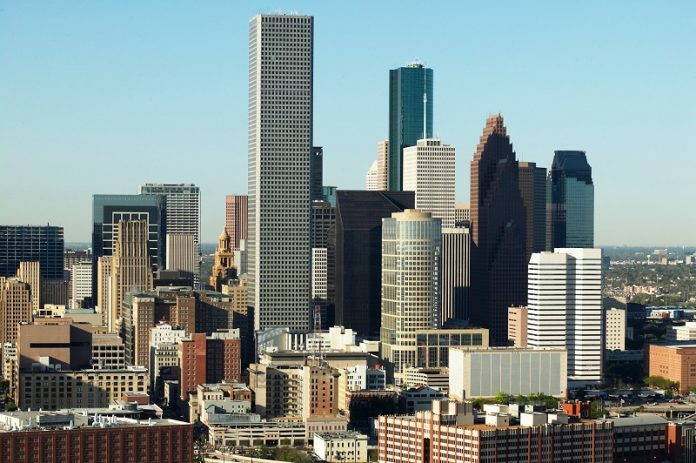
Houston is known for its towering skyscrapers, built to withstand hurricanes.
However, on May 16, 2024, a powerful windstorm called a derecho caused unexpected damage to many of these buildings.
This event disrupted traffic, forced businesses to close, and required costly repairs.
Why did the damage happen?
A recent study published in Frontiers in Built Environment reveals the cause: a special type of wind called a downburst. Downbursts are strong downward gusts that hit the ground and spread out in all directions.
Unlike hurricanes, which create steady high-speed winds, downbursts create quick, intense bursts of wind, especially near the base of tall buildings. These sudden forces can weaken structures in ways engineers didn’t expect.
“We found that downbursts during the May derecho caused significant damage to skyscrapers because they behave differently than hurricanes,” said Dr. Amal Elawady, an associate professor at Florida International University and one of the study’s authors.
To understand how downbursts affect buildings, researchers used the Wall of Wind experimental facility. This system uses 12 powerful jet fans to create wind speeds up to 70 meters per second (over 150 mph). The researchers tested two wind conditions:
- Hurricane winds – steady and strong over time.
- Downburst winds – rapidly increasing, reaching a peak, then decreasing.
They used small building models in a wind tunnel to simulate how winds interact with skyscrapers and surrounding structures. The tests showed that downbursts create stronger suction forces on building surfaces than hurricanes, especially on lower floors and building corners.
The study examined five well-known Houston skyscrapers, all designed to withstand hurricane winds up to 67 meters per second (Category 4 strength).
However, during the derecho, the wind speed was only 40 meters per second—far below hurricane strength.
Despite this, buildings suffered serious damage: facade panels fell off, windows shattered, and cladding was ripped away. The study found that the combination of downbursts and “bouncing” wind between buildings increased pressure on windows and walls, worsening the damage.
Climate change is increasing extreme weather events, making storms like derechos more common. The Gulf of Mexico is warming twice as fast as the global ocean, which could lead to stronger storms. Scientists recommend updating building codes to better protect skyscrapers from downbursts and extreme winds.
“We need to rethink how we design facades and plan city centers to protect buildings from these new challenges,” said Omar Metwally, the study’s lead author.
Understanding these wind patterns will help cities prepare for future storms and keep people safe.



